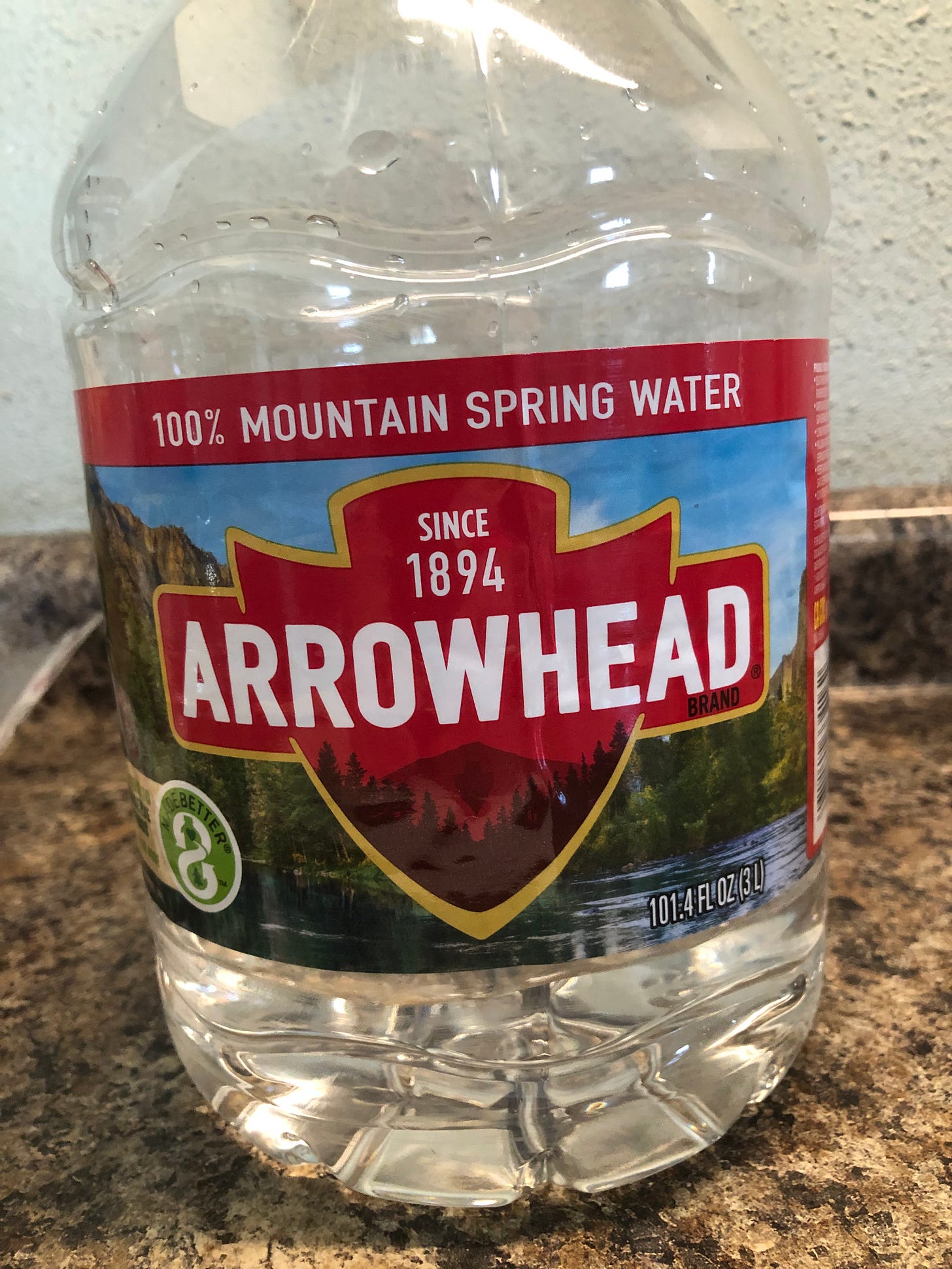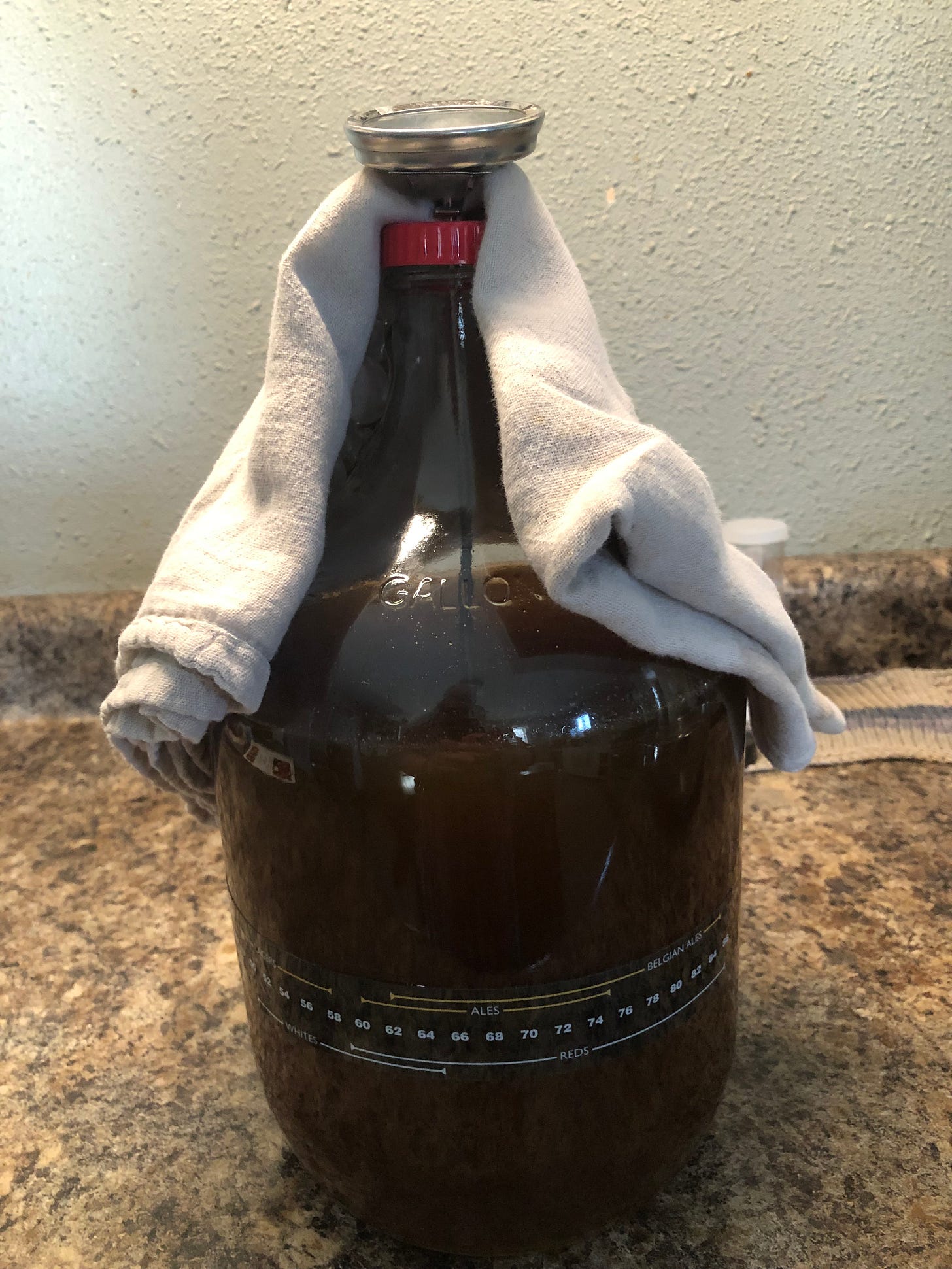Sorry not to have posted for the past week, it’s been pretty busy, and I just have not had the time to sit and write.
Anywho…
Since I had all the stuff out for the hard cider, I decided it was time to try making mead for the first time also.
Mead, yum! The elixir of the Gods! Honey wine! Fermented bee barf! What could be any better??
The recipe is also in the book “The Joy of Brewing Cider, Mead, and Herbal Wine” by Nancy Koziol. The link to the book is in the hard cider post.
It is not that much harder than making the hard cider, but it does involve a few extra steps. You’ll need a couple of carboys, air lock, a different type of yeast, spring water, yeast energizer and yeast nutrient.


Oh and the honey of your choice.
I am using honey that came from hives on our place in Colorado. We had an arrangement with a local beekeeper, he kept his hives there and we got a percentage of the hive’s take yearly. It amounted to about 4 quarts a year for our own use. This honey is a mix of alfalfa and wildflower honey. It’s a beautiful red/brown color and has a wonderful sweet but earthy taste to it. It should make a great mead.
Different honeys will result in different “flavors” of mead.
As with the hard cider, clean and sanitize your equipment and let it air dry.
Since my honey has been in the house for a while, it did crystalize in the jar, and I had to put it in a pot of water and simmer it a bit until it all became liquid again. The recipe calls for 3lbs of honey and my quart jars were pretty dang close to that weight.
Your spring water will need to be pasteurized, and only 2/3 gallon. Any more with the addition of the honey and you will end up with it blowing out of your carboy. Just bring your water to a boil and let it cool back down for about 15 mins when you will add your honey, yeast energizer and nutrient. This is called your must. Stir it well so all your ingredients are well blended.
You may end up with a white foam on top, you can skim it off or leave it, it will not affect your mead. I left it.
Allow this to continue to cool for another 10-15 mins before you put it in your sanitized carboy. Put your rubber stopper and air lock on top to keep impurities out.
Allow the must to cool in the carboy, and this is where you need to be patient. It can take a long time to cool down to the right temp before you pitch your yeast. I use a long thermometer that I use with cheese making to check. I also double up that checking with the fermometer on the jar.
Your temp needs to be about 70-75 degrees for the yeast to go in. I am using Lalvin D47 yeast for this. Take your yeast out of the fridge so that it can come up to room temp. This may take an hour or so depending on how warm your house is. Also make sure you read your instructions on the yeast packet. The one I have required it to be rehydrated prior to pitching and how much the packet of yeast makes, ie 1 gal vs. 5 gal.
Now that your must is cool, your yeast is rehydrated, and the sun, moon, and stars are aligned property, it’s time to pitch your yeast.
First thing, your must needs some oxygen in it. You can do this by vigorously shaking your closed carboy for a few mins. Then add your yeast and put your airlock back on.
It may take a few hours before you see any activity in your must from the yeast. Put your carboy where it is warm, won’t be disturbed and just leave it alone.
I cannot stress this enough!! LEAVE IT ALONE!!!!
See all those pretty bubbles? Yeast is having a party going on!
Now, this is where I screwed up. Learn from my mistake.
At the 48 hour mark I did not see any activity and decided to make a second yeast pitch into the must.
Big mistake
I ended up with a mead Mt Vesuvius all over the counter.
That stuff came up bubbling like a pyroclastic flow of epic 1 gallon proportions. I moved it to the sink, and it doubled its efforts at escaping the carboy.
Needless to say, I lost 3/4’s of the jar and needed to start all over.
So when I say leave it alone, I mean leave it alone!!!
My new batch is now sitting on a shelf, with a towel toga on, where its warm, doing its fermentation thing. I keep it between 70-75 degrees. It will sit there until the fermentation slows down and then I’ll rack it into a second carboy for its secondary fermentation.
The entire process will take a year to complete. I’ll update as the year goes along!
****************************************************************************************
Mead recipe
1 Packet of Lalvin D47 yeast
3lbs honey
1 gal Spring Water
1/2 teaspoon yeast energizer
1 teaspoon yeast nutrient
You can use the above guide, or better yet, get the book, it has way more information!
~~~~~~~~~~~~~~~~~~~~~~~~~~~~~~~~~~~~~~~~~~~~~~~~~~~~~~
The hard cider is cooking right along here, got lots of good bubbles going thru the air locks. Another few weeks and I’ll sugar it and rack it into bottles.
I wanted to add a video of it doing its thing, but it won’t let me attach a video to this post. I’ll do a follow up post in a bit and see if I can get it on there. Its pretty cool to see!
Blessed Be!











Bee barf 😂🤣
I also want to attempt Mead. Was going to use my own honey barfed by my own bees but alas. The Universe moved me on before this could happen. I haven't given up yet; have every intention of keeping bees again.
Three quarts. Huh. That's a lot of honey (and effort on your part). Sorry about the mishap.